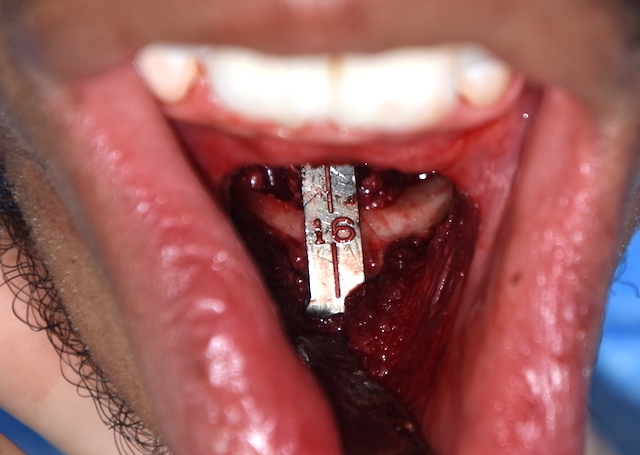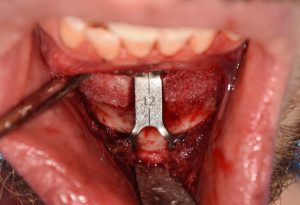Repositioning of the jaws is a well known method of treating obstructive sleep apnea (OSA) with substantial forward movements. This works because the base of the tongue is pulled forward as dentoalveolar portion of the jaw moves forward and the soft palate similarly does so with the maxillary advancement. A smaller osteotomy on the lower jaw, although technically isolated to the chin, is that of the sliding genioplasty. It also has attachments to the tongue via the genioglossus muscle which can have some effect on anterior tongue repositioning. The question is whether chin repositioning alone is enough to make any airway difference with its isolated bony movement.

In the April 2024 issue of the Aesthetic Surgery Journal an article was published on this topic entitled ‘Does Osseous Genioplasty Impact Upper Airway Volume?’ In this paper the authors used pre- and postoperative cone beam 3D CT scans to evaluate the chin and hyoid spatial positions and upper airway volumes. In forty-four (44) patients, thirty-nine (39) of which received a forward positioning, eight (8) of which had a vertical change and six (6) in which the chin was centered. Statistical increases were seen in total upper airway volume and at the level of the oropharynx. Whether these statistical airway space improvements translate into positive apnea-hypogea indices for treating OSA remains to be further studied.
Theoretically if the chin is moved far enough forward some improvement in the oropharyngeal airway could be obtained. But like stretching out a wrinkled up rug, it takes considerable pull on one side of the rug to get the other side fully stretched out…because the pull is indirect. (meaning on the other side from where the effect is desired to be seen) Which is why a anterior chin osteotomy would be expected to have far less effect than that of moving the posterior ramus part of the lower jaw. The key is that it would have to be anterior or sagittal movement, it needs to be big enough (greater than 10mms) and a congenitally short chin/lower jaw needs to present. It is harder to envision that vertical elongation, centering and particularly setbacks create any significant traction on the genioglossus muscle.
It is also relevant to look at the history of the genioglossus advancement surgery in the treatment of OSA. Once a popular treatment when introduced decades ago it is less frequently used today and seems to have fallen out of favor. Offering potential airway improvements in patients with normal chin projections and jaw developments its conceptual basis in OSA is the same as that of the sliding genioplasty. The sliding genioplasty, however, has a potentially more profound pull on the genioglossus as well as the geniohyoid muscles particularly in large horizontal advancements.
Dr. Barry Eppley
World-Renowned Plastic Surgeon




